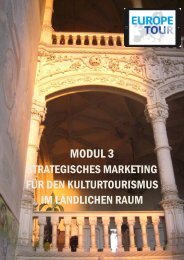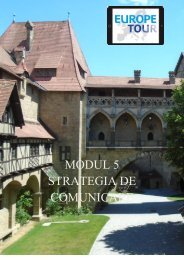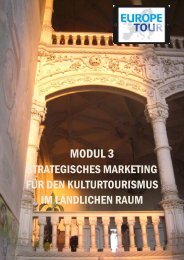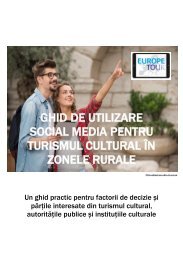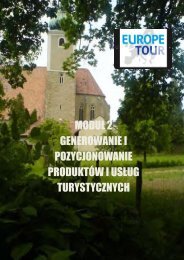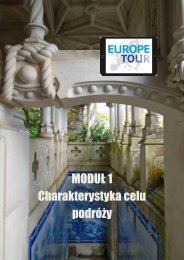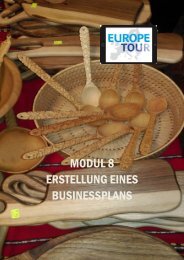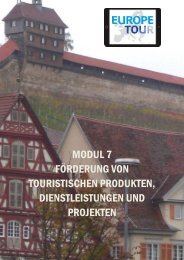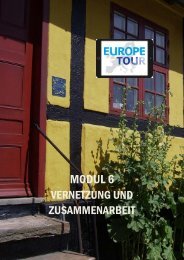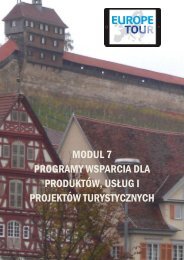Module_3_Marketing_Strategy
You also want an ePaper? Increase the reach of your titles
YUMPU automatically turns print PDFs into web optimized ePapers that Google loves.
CULTURAL TOURISM TRAINING COURSE<br />
MODULE 3 - STRATEGIC MARKETING IN CULTURAL TOURISM<br />
11. Human resources<br />
12. Affinity for travel and tourism<br />
13. Natural resources<br />
14. Cultural resources.<br />
Competitive Analysis<br />
A competitive analysis is another important element in cultural tourism marke-ting planning and<br />
research. Most competitors vary by target market and there-fore it is best if you divide the competitive<br />
analysis in that way. For example, an organisation may have a different set of competitors for business<br />
conventions and meetings than it has for individual pleasure travellers.<br />
You should have a good perception of your competitors, but the best source are visitors themselves.<br />
Asking visitors in surveys to pinpoint other destinations or providers that they considered for their trips<br />
is one way to tackle this. Another option is to use a focus group approach in which past or potential<br />
visitors reach a consensus on the closest competitors. Be creative in order to find out what kind of<br />
experiences your visitors had with competing institutions – you might also find out that a competitor<br />
could be a partner on a certain topic!<br />
Visitor market analysis<br />
From time to time, i.e. every two to three years, you should undertake a visitor analysis. The<br />
categories of information that this analysis should provide include<br />
• demographic and socio-economic characteristics<br />
• travel trip characteristics (e.g. trip purposes, length of stay, accommo-dation and transportation<br />
usage, etc.)<br />
• Previous visit patterns (number and timing of previous trips)<br />
• Revisit intentions (probability of a return visit)<br />
• Attraction usage and awareness<br />
• Activity participation in your destination<br />
• Travel information sources used for trip to destination<br />
• Media usage (TV; newspapers; magazines; Internet/sociaI media, etc.)<br />
• Trip satisfaction levels<br />
• Likes and dislikes<br />
• Suggested improvements to the destination<br />
<strong>Marketing</strong> position and destination image analysis<br />
You need to understand your image or position in the minds of past and potential visitors. Assess<br />
your organisation’s current offline and online marketing activities and how your destination is<br />
performing against your competition. Unfortunately, this image research is done infrequently and<br />
seldom.<br />
15




